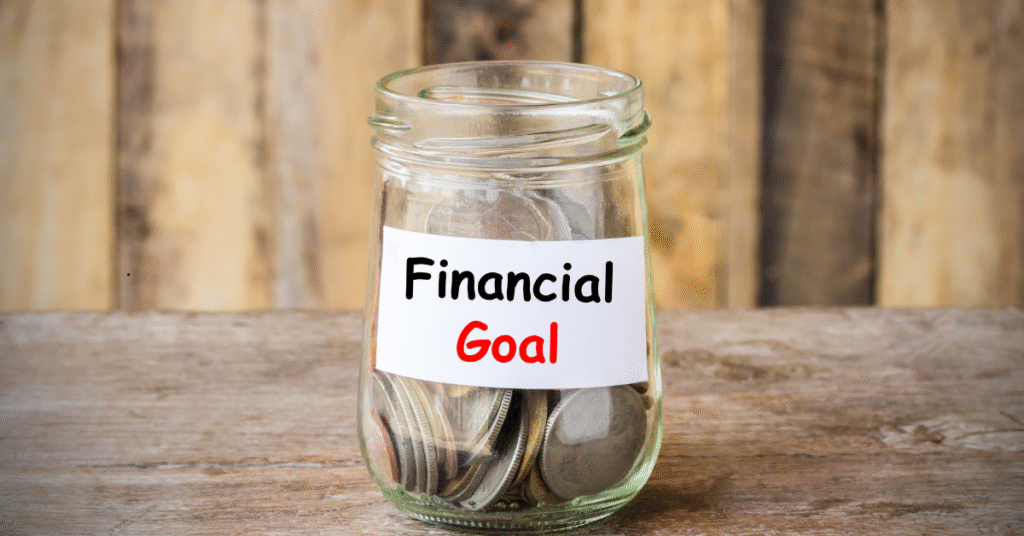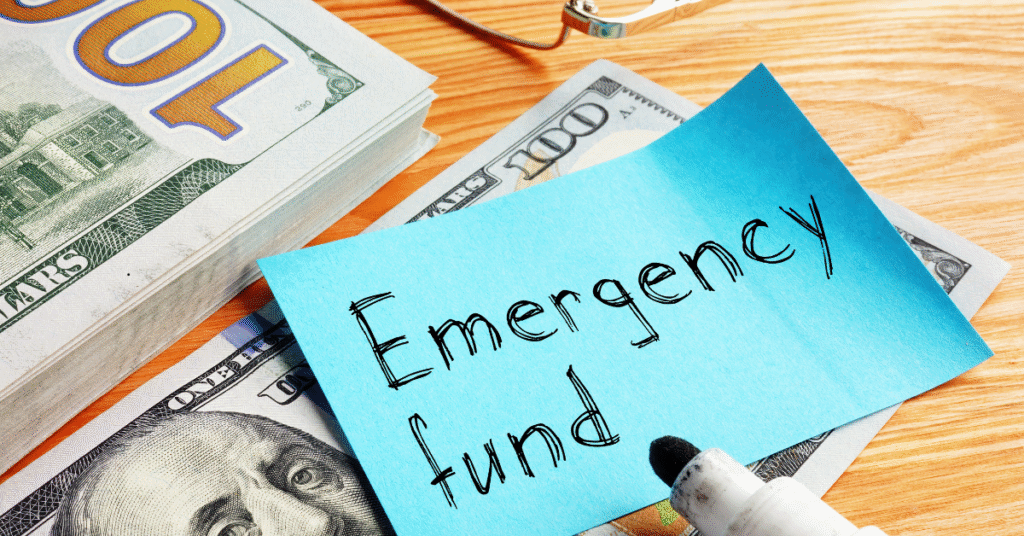10 Good Financial Goals To Achieve This Year

Let me be real with you, most people treat their money like a leaf in the wind, just letting it blow wherever life takes them. No plan, no direction, just hoping things work out somehow. Spoiler alert: they usually don’t. 🙂
But here’s the thing: once you lock in some solid financial goals, everything changes. Suddenly, you’re not just spending money, you’re investing in your future. You know exactly where your paycheck goes, and trust me, that clarity feels pretty darn good.
I’ve spent years studying finance (yeah, I’ve got the degrees to prove it), and I’ve seen countless people transform their financial lives simply by setting clear, achievable goals. Whether you’re eyeing short-term wins or playing the long game, having a strategy isn’t optional; it’s essential.
So grab your favourite drink, get comfortable, and let’s chat about how you can take control of your finances this year. No fluff, no fancy jargon, just real talk about building the financial future you actually want.
What Are Financial Goals?
Think of financial goals as your money’s job description. They’re the important things you need to spend on to maintain (or upgrade) your lifestyle. We’re talking about the big-ticket items that actually matter, not your daily coffee habit (though we should probably talk about that too).
Here’s how I break it down for my clients: financial goals come in three flavours, short-term (think 6 months to a year), medium-term (1-5 years), and long-term (5+ years). Each one needs its own game plan because, let’s face it, saving for a vacation is way different from saving for retirement.
The kicker? These goals usually cost serious money. That’s exactly why winging it isn’t gonna cut it. You need a proper plan, and you need it yesterday.
Why Are Financial Goals So Important?
Ever wonder why some people seem to have their financial lives together while others are constantly stressed about money? The secret isn’t a massive salary or winning the lottery; it’s intentional goal-setting.
Here’s what happens when you set financial goals:
- Your spending decisions become crystal clear
- You stop wasting money on stuff that doesn’t matter
- You actually start building wealth instead of just earning money
- You sleep better at night (seriously, financial stress is real)
Without deliberate financial goals, you’re basically driving with your eyes closed. Sure, you might not crash immediately, but eventually, you’re gonna hit something. And when you do, it won’t be pretty.
From my experience working with clients, those who set clear financial goals end up feeling more fulfilled and less anxious. They’re not just surviving, they’re thriving. That sense of control over your financial destiny? Priceless.
What Are Some Good Financial Goals?
Now we’re getting to the good stuff. Good financial goals are ones that actually move the needle on your financial health. I’m talking about goals that set you up for long-term success, not just temporary happiness.
The wealth-building goals include:
- Signing up for a solid retirement plan (401k, IRA, you name it)
- Paying off that annoying mortgage hanging over your head
- Starting a business that could generate passive income
- Building an investment portfolio that works for you
These are the goals that get you closer to financial freedom. They’re the difference between working. You want to work because you have to.
Now, don’t get me wrong, goals like buying a new car or booking that dream vacation are totally valid. They make life enjoyable, and we all deserve nice things. But here’s the tough love: these are liabilities, not assets. They cost you money without giving anything back.
IMO, the best approach is to balance both types of goals. Build your wealth and enjoy your life. Just make sure the wealth-building goals get priority.
How To Set Realistic Financial Goals

Alright, so you’re pumped about setting financial goals, but where do you actually start? I’ve got a foolproof 5-step process that works every single time.
Think About Your Short And Long-Term Future
Here’s a question for you: What does your life look like in 5 years? How about 10 or 20 years?
If you’re drawing a blank, that’s your first problem. You can’t set meaningful financial goals without envisioning your future. I’m not talking about some vague “I want to be happy” stuff; get specific.
Do you see yourself travelling the world? Running your own business? Living in a beachfront property? Sending your kids to top universities?
Once you’ve got that mental picture locked in, the goals practically write themselves. Every financial decision you make should bring you closer to that vision. If it doesn’t, why are you doing it?
I remember when I first did this exercise myself. I realised I was spending money on things that had zero connection to my actual dreams. That realisation was uncomfortable but necessary. It forced me to realign my spending with my values.
Categorise Your Financial Goals
Not all goals are created equal, and treating them the same way is a recipe for disaster.
Here’s how to categorise them:
Short-term goals (6 months – 2 years):
- Building a starter emergency fund
- Paying off high-interest credit card debt
- Saving for a vacation or new furniture
Medium-term goals (2-5 years):
- Saving for a car down payment
- Building a fully-funded emergency fund (3-6 months of expenses)
- Paying off student loans
Long-term goals (5+ years):
- Saving for retirement
- Buying a house
- Funding your children’s education
Why does this categorisation matter? Because a long-term goal requires completely different strategies than a short-term one. You can’t approach retirement savings the same way you approach saving for new headphones. The timelines, investment strategies, and commitment levels are worlds apart.
Set A Target Date
Vague goals produce vague results. “Someday I’ll save for retirement” is about as useful as a screen door on a submarine.
You need specificity. Pick an actual date, month, day, and year. Write it down. Put it on your calendar. Make it real.
For example, instead of saying “I want to build an emergency fund,” say “I will have $10,000 in my emergency fund by December 31, 2026.” See the difference?
That target date creates urgency and accountability. It transforms a wish into a commitment. Plus, it lets you work backwards to figure out exactly how much you need to save each month.
I’ve noticed that my clients who set specific deadlines achieve their goals about 70% more often than those who keep things vague. That’s not a coincidence; it’s the power of specificity.
Prioritise Your Financial Goals
Look, I get it. You want to do everything at once. Save for retirement, build an emergency fund, pay off debt, buy a house, start a business, travel the world, all simultaneously.
But here’s the reality: trying to chase every goal at once is the fastest way to achieve none of them.
You’ve got to prioritise. And not based on what sounds most exciting, but based on what makes the most financial sense.
Here’s my priority framework:
- Priority: High-interest debt (credit cards, payday loans)
- Second priority: Emergency fund (at least $1,000 to start)
- Third priority: Employer 401 (k) match (it’s free money, people!)
- Fourth priority: Fully-funded emergency fund (3-6 months of expenses)
- Fifth priority: Other debt (student loans, car payments)
- Sixth priority: Retirement savings beyond the match
- Seventh priority: Other goals (house, vacation, business, etc.)
Does this mean you can’t work on multiple goals? Nope. But it does mean your resources should be heavily weighted toward the top priorities.
Think of it like this: if your house is on fire (high-interest debt), you don’t start planning the kitchen renovation (vacation fund). Put out the fire first.
Develop A Savings Plan
This is where the rubber meets the road. You’ve identified your goal, set a deadline, and prioritised it. Now you need a concrete savings plan.
Let’s work through an example: Say you want to save $20,000 for a house down payment within two years. That breaks down to about $834 per month. Can your budget handle that? If yes, perfect. If no, you need to either extend your timeline or increase your income.
Here’s how to build your savings plan:
- Calculate the total amount needed
- Divide by the number of months until your deadline
- Determine if that monthly amount fits your budget
- Adjust timeline or amount if necessary
- Automate the savings (this is crucial!)
The automation part is non-negotiable. Set up automatic transfers from your checking to your savings account the day after payday. Treat it like a bill you can’t skip.
Why? Because relying on willpower is setting yourself up for failure. Life happens. Unexpected expenses pop up. Friends invite you out. If you leave it to chance, you won’t save consistently.
Automate it, and suddenly saving becomes effortless. The money’s gone before you even see it, and you learn to live on what’s left.
10 Examples Of Financial Goals To Achieve This Year
Enough theory, let’s get practical. Here are ten financial goals that could genuinely transform your financial situation. Pick one (or a few) that resonates with your current situation and future vision.
1. Choosing A Retirement Plan

Let’s start with the big one: retirement. I know, I know, retirement feels like forever away, especially if you’re in your 20s or 30s. But here’s the brutal truth: time is your biggest asset when it comes to retirement savings, and you’re wasting it.
I don’t care if you’re barely scraping by or rolling in cash; everyone needs a retirement plan. Period. The alternative is working until you physically can’t anymore or relying on others to support you. Neither option sounds appealing, right?
Here’s what you need to know about retirement planning:
If you have an employer-sponsored plan (401k, 403b):
- Contribute at least enough to get the full employer match (typically 3-6% of your salary)
- Aim to eventually contribute 15% of your gross income
- Choose low-cost index funds if possible (target-date funds are fine too)
If you’re self-employed or don’t have access to a 401 (k):
- Open a Roth IRA if you’re eligible (income limits apply)
- Consider a Traditional IRA if you’re above Roth limits
- Look into a Solo 401 (k) if you have self-employment income
Let’s do some quick math: If you’re 30 years old and start putting away $500 a month into a retirement account earning an average 8% return, you’ll have about $880,000 by age 65. Not a millionaire, but definitely comfortable.
Wait until you’re 40 to start? That same $500 monthly only grows to about $360,000. See how much waiting costs you?
The best day to start saving for retirement was 20 years ago. The second-best day is today. Open that account, set up automatic contributions, and stop overthinking it.
2. Planning A Vacation
Alright, time to lighten things up a bit. Not every financial goal needs to be about securing your distant future. Sometimes, you just need a break.
Planning a vacation might seem frivolous compared to retirement savings or debt payoff, but honestly? Taking care of your mental health matters, too. A well-planned vacation can recharge your batteries, strengthen family bonds, and create memories that last way longer than that new gadget you’re eyeing.
The keyword here is “planned.” Spontaneous trips are fun in movies, but in real life, they usually mean credit card debt and regret.
Here’s how to properly save for a vacation:
- Decide on your destination and research total costs (flights, accommodation, food, activities, souvenirs)
- Add a 20% buffer for unexpected expenses (trust me on this)
- Set a realistic timeline based on your budget
- Open a separate savings account specifically for vacation funds
- Set up automatic transfers to that account
For example, if you want to take a $3,000 European vacation in 18 months, you need to save about $167 per month. That’s totally doable for most people, especially if you treat it like a non-negotiable bill.
Pro tip: Use a high-yield savings account for your vacation fund. Sites like Marcus by Goldman Sachs or Ally Bank offer decent interest rates that’ll add a bit extra to your vacation budget.
Also, do your homework on the destination. Some places are way cheaper than others. Southeast Asia? Your money goes far. Switzerland? Not so much. Choose wisely based on your budget and interests.
3. Paying Off Student Loan Debt

Ah, student loans, the gift that keeps on taking. If you’re one of the millions of Americans carrying student debt, making a plan to knock it out should be high on your priority list.
Here’s why this matters so much: Student loan debt isn’t like a mortgage, where you’re building equity in an asset. You’re paying for something you already consumed (your education). Every dollar you put toward interest is a dollar that could be building your wealth instead.
I see too many people resigned to making minimum payments for 20+ years. That mindset keeps you broke and stressed. Let’s flip the script.
Strategies to pay off student loans faster:
The Avalanche Method:
- List all your loans by interest rate (highest to lowest)
- Make minimum payments on everything
- Throw all extra money at the highest-interest loan
- Once that’s paid off, move to the next highest
The Snowball Method:
- List all your loans by balance (smallest to largest)
- Make minimum payments on everything
- Throw all extra money at the smallest balance
- Once that’s paid off, move to the next smallest
Mathematically, the avalanche method saves you more money. Psychologically, the snowball method keeps you motivated with quick wins. Pick the one that fits your personality.
Also, check if you qualify for any forgiveness programs, especially if you work in public service, education, or nonprofit sectors. Don’t leave free money on the table.
If you need more detailed strategies, check out StudentAid.gov for official repayment options and forgiveness programs.
Bottom line: Student loans don’t have to define your financial future. Make a plan, stick to it, and free yourself from that burden.
4. Settling Credit Card Debt
Credit card debt is like financial quicksand; the more you struggle without a plan, the deeper you sink. High-interest rates (often 18-25% APR) mean that even modest balances can spiral out of control fast.
If you’re carrying credit card debt, listen up: This should be at the very top of your priority list. Not just near the top, AT the top. Why? Because nothing else you do financially matters if you’re haemorrhaging money to interest payments.
Here’s your step-by-step plan to crush credit card debt:
Step 1: Stop the bleeding. Put the cards away. Seriously, freeze them in a block of ice if you have to. You cannot dig yourself out of a hole while actively digging deeper. Switch to cash or debit for everything.
Step 2: List all your debts. Write down every credit card, the balance, the interest rate, and the minimum payment. Seeing it all in one place hurts, but you need that clarity.
Step 3: Choose your attack method. Use either the avalanche method (highest interest first) or the snowball method (smallest balance first), just like with student loans. My recommendation? If you’re overwhelmed, start with a snowball for the motivation boost.
Step 4: Find extra money. Cut expenses, sell stuff you don’t need, pick up a side hustle. Every extra dollar goes toward debt. This isn’t forever; it’s temporary pain for long-term freedom.
Step 5: Consider a balance transfer. If you have good credit, look into 0% APR balance transfer cards. NerdWallet has updated comparisons. Just make sure you can pay it off before the promotional period ends.
I’ve seen people with $30,000+ in credit card debt become debt-free within 2-3 years using these strategies. It’s intense, it’s not fun, but it’s absolutely doable.
One client of mine was paying over $600 monthly in interest alone before we tackled her credit card debt. Once she became debt-free, that $600 went straight into investments. Within five years, that money grew to over $45,000. That’s the opportunity cost of staying in debt.
5. Buying A House

Homeownership, the supposed American Dream. And honestly? It can be a great financial move, but only if you do it right and for the right reasons.
Let me be straight with you: Buying a house isn’t always the smart financial choice. Renting isn’t “throwing money away,” and buying isn’t automatically building wealth. The right choice depends on your specific situation, location, and timeline.
When buying makes sense:
- You plan to stay in the area for at least 5 years
- You have a stable income and an emergency fund
- The mortgage payment (including taxes and insurance) is no more than 28% of your gross income
- You’re emotionally and financially ready for maintenance and repairs
- Home prices in your area are reasonable relative to rent
The savings plan for homeownership:
Traditional advice says you need a 20% down payment to avoid PMI (private mortgage insurance). For a $300,000 home, that’s $60,000. Plus closing costs (2-5% of purchase price), moving expenses, and immediate home needs.
Realistically, you’re looking at needing 25% of the home’s value in cash. That’s $75,000 for our $300,000 example.
If you want to save that in 5 years, you need to put away $1,250 monthly. Can you swing that while still handling your other financial obligations?
Alternative approaches:
- FHA loans allow 3.5% down payments (though you’ll pay PMI)
- Some states offer first-time homebuyer programs with down payment assistance
- VA loans (if you’re a veteran) offer 0% down
Before you dive into homeownership, use calculators on sites like Zillow or Bankrate to compare the true costs of renting vs. buying in your area.
Buying a home can be a fantastic goal, but don’t rush into it just because you feel like you “should” own property. Make sure it makes financial sense for your specific situation.
6. Starting A Business
Want to hear something crazy? About 50% of Americans have dreamed about starting their own business at some point. But less than 10% actually do it.
Why? Usually, it comes down to two things: fear and money.
Let me address the money part since that’s what we’re focused on here. Starting a business requires capital, sometimes a lot, sometimes a little, but always some.
Here’s the reality of business startup costs:
Low-cost businesses ($1,000-$5,000):
- Freelance consulting or services
- E-commerce stores (dropshipping or print-on-demand)
- Online coaching or course creation
- Content creation or digital marketing agency
Medium-cost businesses ($5,000-$50,000):
- Food trucks or catering
- Retail stores
- Franchises (some low-cost options exist)
- Brick-and-mortar service businesses
High-cost businesses ($50,000+):
- Restaurants
- Manufacturing
- Major franchises
- Tech startups with product development
Before you start saving, you need to know what type of business you want to start. Do your research, create a detailed business plan, and calculate realistic startup costs.
Steps to save for your business:
- Define your business idea and research startup costs thoroughly
- Add a 50% buffer to your estimate (things always cost more than expected)
- Set a timeline based on your savings capacity
- Open a separate business savings account
- Consider side hustling to accelerate savings
Here’s something most people don’t consider: You can start many businesses on the side while keeping your day job. This “hybrid” approach lets you test your business idea without the financial risk of going all-in immediately.
I started my own financial consulting practice while still working full-time. It took two years, but by the time I left my job, I already had a steady client base and proven income. That strategy meant zero income gap and much lower financial stress.
Tools like SCORE offer free business mentoring, and the Small Business Administration has tons of resources for aspiring entrepreneurs.
Starting a business isn’t for everyone, but if you’ve got that entrepreneurial itch, make it a proper financial goal with a real plan behind it.
7. Paying For College Education
Whether you’re funding your own education or your kid’s, college costs are no joke. The average cost for a four-year public university is now over $100,000 when you factor in tuition, fees, room, board, and books. Private universities? Try $200,000+.
These numbers are terrifying, but they shouldn’t prevent you from pursuing education. They should just make you more strategic about it.
If you’re saving for your own education:
Consider whether the degree will actually increase your earning potential enough to justify the cost. A master’s in engineering? Probably worth it. A second bachelor’s degree in philosophy? Maybe reconsider (no offence to philosophy majors).
Savings strategies for your education:
- Calculate total costs realistically (tuition, fees, books, living expenses)
- Research scholarships and grants aggressively
- Consider starting at a community college and transferring
- Look into employer tuition reimbursement programs
- Explore income-share agreements as an alternative to loans
If you’re saving for your children’s education:
529 College Savings Plans are your best friend. These tax-advantaged accounts let your money grow tax-free, and withdrawals for qualified education expenses are also tax-free.
Many states offer tax deductions for contributions to their 529 plans. Check your state’s specific plan at Savingforcollege.com.
How much should you save?
Financial advisors often recommend aiming to cover about 50-75% of college costs through savings, with the rest coming from current income, student work, and modest loans.
If you start when your child is born and save $300 monthly with a 7% return, you’d have about $130,000 by age 18. That won’t cover everything, but it’s a solid foundation.
Here’s my controversial take: Don’t sacrifice your retirement to fully fund your kid’s education. Your children can borrow for college; you can’t borrow for retirement. Aim to help significantly without jeopardising your own financial security.
8. Building An Emergency Fund

If I could force everyone to prioritise just one financial goal, this would be it. An emergency fund isn’t sexy; it won’t make your Instagram followers jealous, but it’s the foundation of every successful financial plan.
Here’s what I tell every client: Financial planning without an emergency fund is like building a house on sand. Eventually, a storm comes, and everything collapses.
Why emergency funds matter:
Life has this annoying habit of throwing curveballs right when you can least afford them. Your car dies, you lose your job, your roof starts leaking, you have a medical emergency, pick your disaster. Without an emergency fund, these situations force you into debt, derailing all your other financial goals.
How much do you need?
Starter emergency fund: $1,000. If you’re in debt-payoff mode, park $1,000 in a savings account and focus on crushing debt. This covers minor emergencies without derailing your debt payoff.
Full emergency fund: 3-6 months of expenses. Once you’re debt-free (except mortgage), build this up. If you’re a W-2 employee with stable income, 3 months is probably fine. Self-employed or single-income household? Aim for 6 months.
To calculate: Add up all your essential monthly expenses (housing, food, utilities, insurance, minimum debt payments, transportation). Multiply by 3-6. That’s your target.
Where to keep your emergency fund:
High-yield savings accounts are perfect. You want this money accessible but not TOO accessible (like in your checking account, where you might accidentally spend it).
Online banks like Marcus, Ally, or Discover typically offer much better interest rates than traditional banks.
As of late 2024, many high-yield savings accounts are offering 4-5% APY, which is actually pretty solid for emergency money.
How to build it:
Set up automatic transfers every payday. Even if you can only spare $50 per paycheck right now, start there. Small, consistent contributions add up faster than you think.
I had a client who swore she couldn’t save anything. We found $75 in her monthly budget by cutting one streaming service and making coffee at home three days a week. Within a year, she had over $900 saved, more than she’d ever had in her life.
Building an emergency fund isn’t exciting, but the peace of mind it provides? Absolutely priceless.
9. Finding A Higher-Paying Job
Sometimes, the best financial goal isn’t about how you spend or save money, it’s about how you earn it.
If your current job barely covers your bills and leaves nothing for savings, you’re not going to debt-payoff or invest your way to financial security. You need more income, plain and simple.
Signs you need a higher-paying job:
- You can’t cover basic expenses without credit cards
- You have zero savings after years of working
- You’re constantly stressed about money despite living frugally
- You’re significantly underpaid compared to industry standards
- Your employer hasn’t given meaningful raises in years
Here’s something most people don’t realise: In many cases, changing jobs is the fastest way to increase your income. Studies show that job switchers typically see salary increases of 10-20%, while those who stay with the same employer average raises of just 3-5%.
Strategies to increase your income:
Level up your current situation:
- Ask for a raise (with evidence of your value)
- Take on additional responsibilities for more pay
- Get certified in high-demand skills
- Switch departments to a higher-paying role
Find a new job:
- Update your resume and LinkedIn profile
- Network in your industry (most jobs are filled through connections)
- Apply strategically to roles that match your skills
- Practice interviewing to negotiate better offers
Develop additional income streams:
- Freelance in your field of expertise
- Start a side business
- Rent out assets (spare room, parking space, equipment)
- Create passive income through investments
I switched jobs three times in five years early in my career, and my salary doubled. Would that have happened if I’d stayed loyal to one employer? Not a chance.
Sites like Glassdoor and PayScale can show you if you’re being underpaid. If you are, it’s time to make a move.
Don’t get comfortable earning less than you’re worth. Your financial goals depend on having adequate income to fund them.
10. Attaining Financial Freedom
We’ve reached the ultimate goal, financial freedom. This is the dream, right? Having enough money that you’re not constantly worried about it. Being able to make choices based on what you want, not what you can afford.
But what exactly is financial freedom? For me, it’s when you have enough passive income and assets to cover your living expenses indefinitely. You work because you choose to, not because you have to.
For some people, that means retiring at 35 and living on a beach. For others, it means staying in their career but having the security to take risks or turn down projects that don’t align with their values.
The path to financial freedom:
Build multiple income streams. Don’t rely solely on one job or one source of income. Diversification applies to income just like investments.
- Employment income
- Rental property income
- Dividend income from stocks
- Business or side hustle income
- Royalties or passive income from products/content
Invest consistently and wisely. Financial freedom comes from your money working for you, not just you working for money.
Focus on these investment vehicles:
- Tax-advantaged retirement accounts (401k, IRA, HSA)
- Taxable brokerage accounts for long-term investing
- Real estate (rental properties or REITs)
- Index funds that track market performance
The key is consistency. Investing $500 monthly starting at age 25 will likely make you a millionaire by retirement (assuming average 8% returns). But you have to actually do it month after month, year after year.
Reduce and eliminate debt. Financial freedom and debt don’t coexist. You can’t be financially free if you’re chained to payments every month.
Control lifestyle inflation. As you earn more, resist the temptation to spend proportionally more. If you get a $10,000 raise, save or invest at least $7,000 of it. This discipline accelerates your path to freedom.
Calculate your “freedom number” How much money do you need to be financially free? A common rule is 25 times your annual expenses. If you spend $40,000 per year, you need $1 million invested. At a 4% withdrawal rate, that $1 million generates $40,000 annually.
Resources like Mr Money Moustache or ChooseFI offer great insights into the Financial Independence, Retire Early (FIRE) movement.
Financial freedom doesn’t happen overnight. It’s the cumulative result of hundreds of smart decisions made consistently over the years. But it’s absolutely achievable if you commit to the journey.
Final Thoughts
Look, financial goals aren’t about restriction; they’re about freedom. They give your money purpose and your future direction. Whether it’s retiring early or taking that dream trip, each goal exists to help you live with intention, not limitation.
Start with the basics: create a budget so you know where every dollar goes, track your spending until you spot the leaks, and anticipate future costs before they surprise you. And if your income isn’t enough, make boosting it your top priority; no budget can fix a lack of earnings.
Progress, not perfection, is what counts. Save what you can, even if it’s small. The best time to start was years ago; the second-best is right now. Pick one goal, take one action, and begin today. Your future self will be grateful you did.








